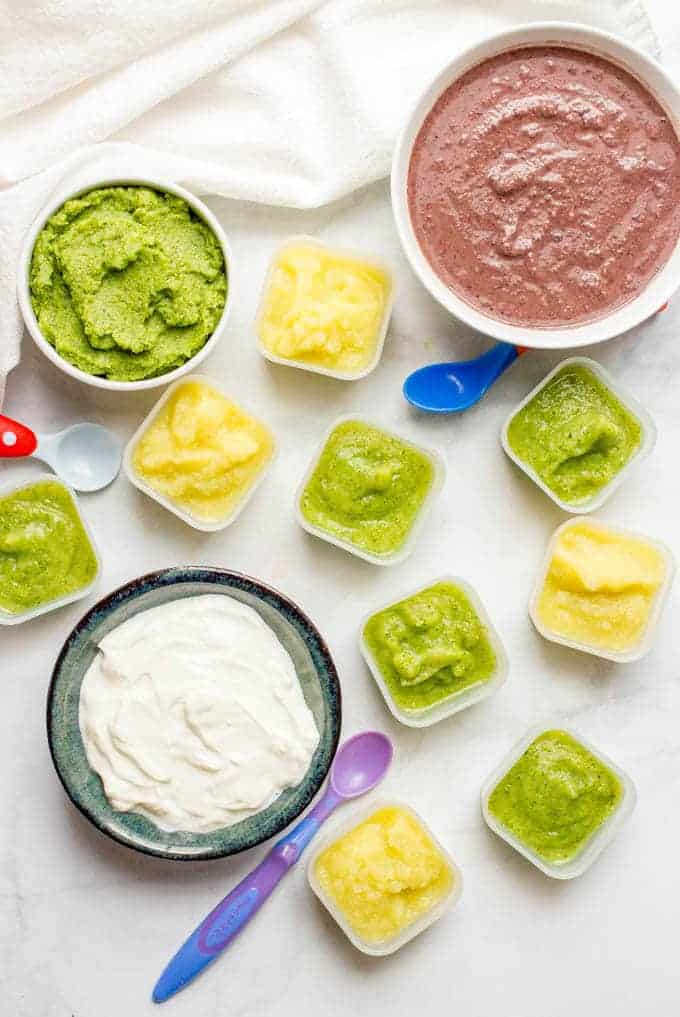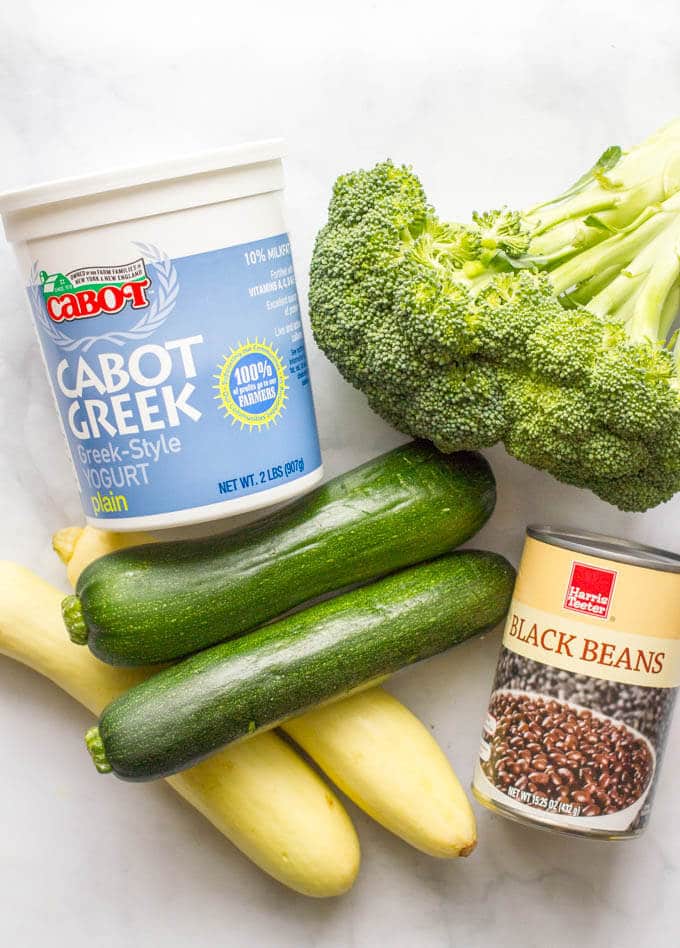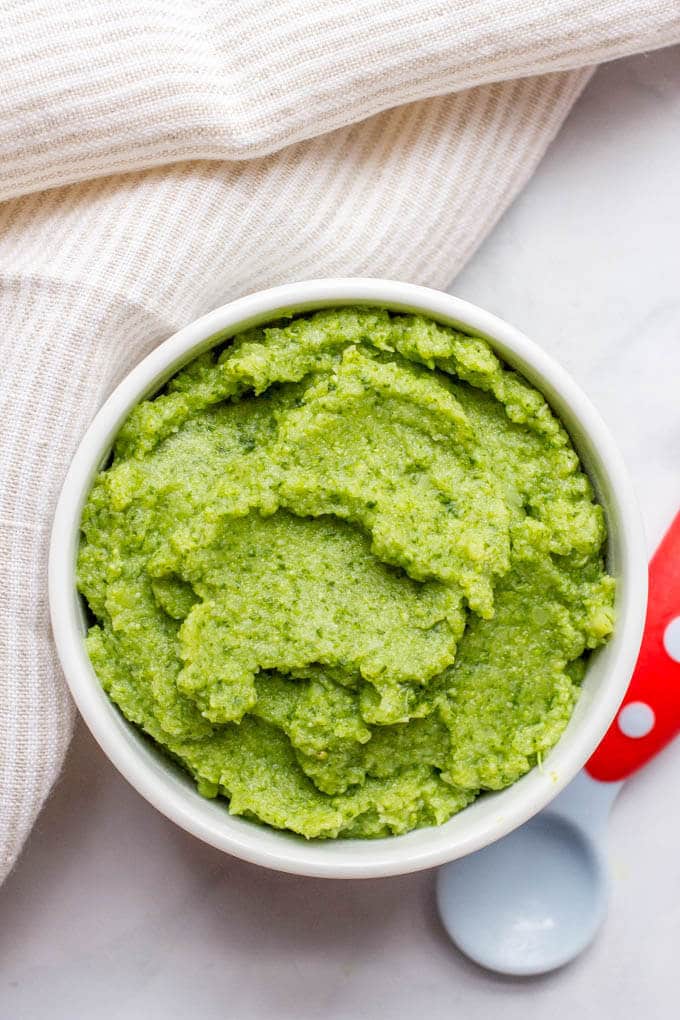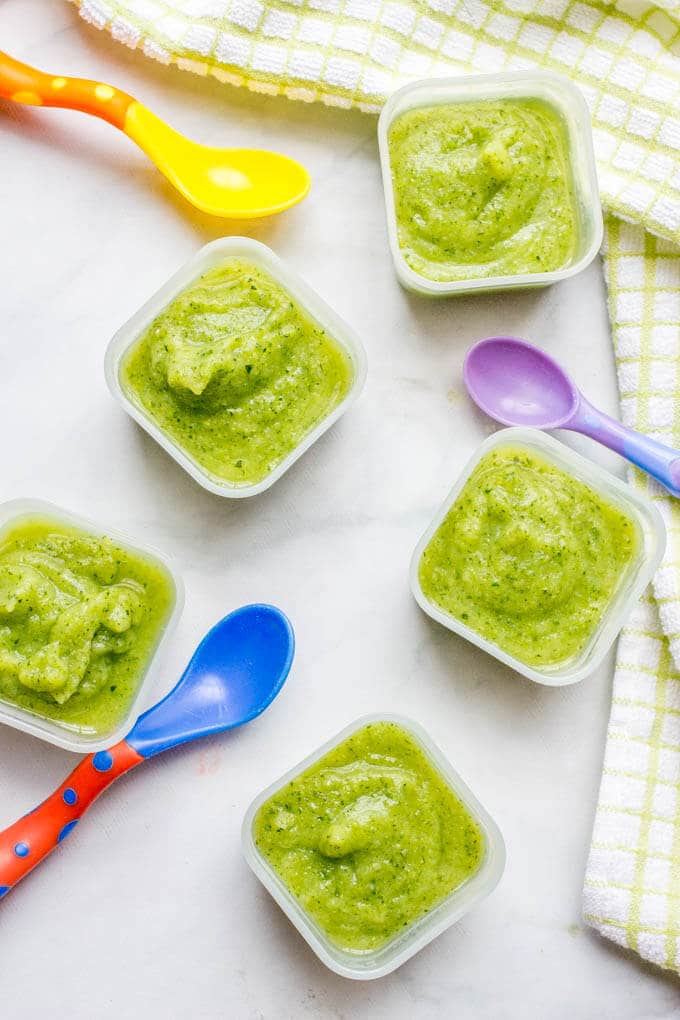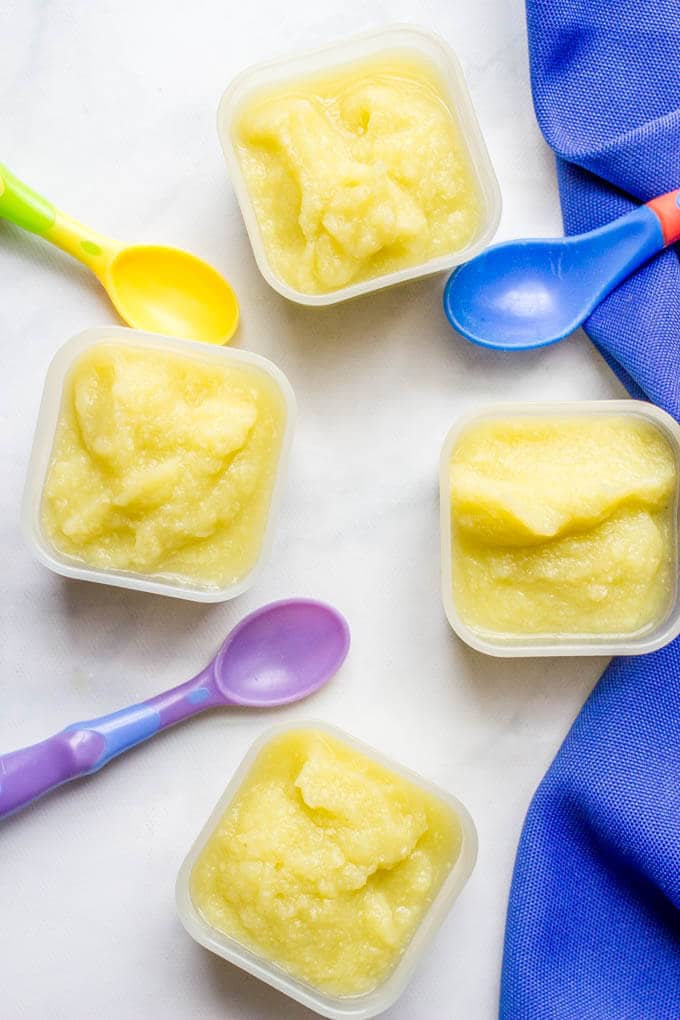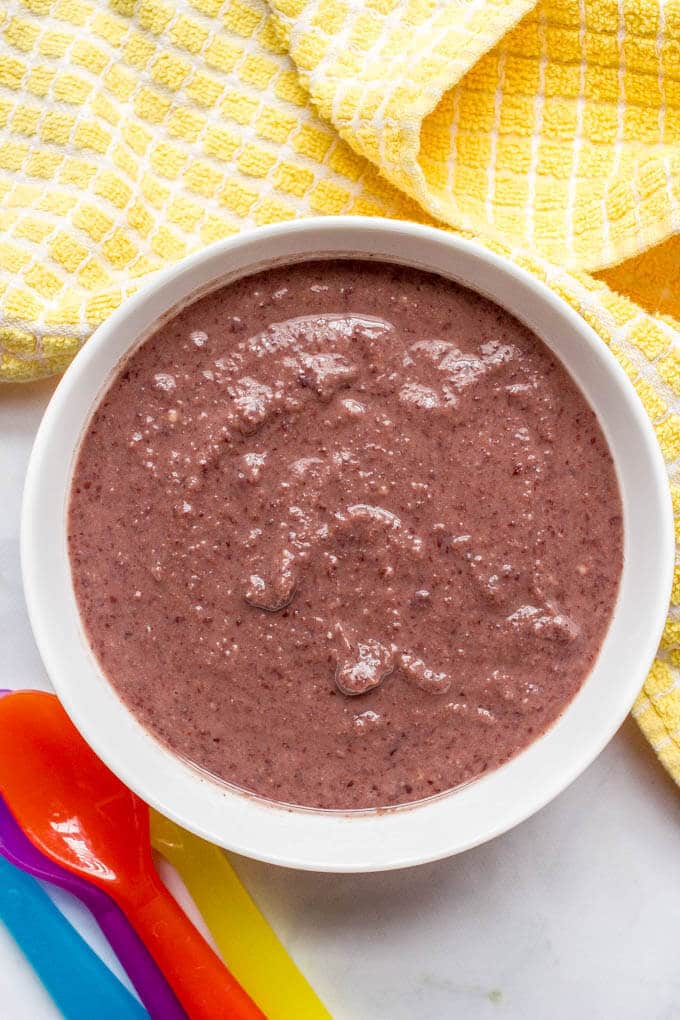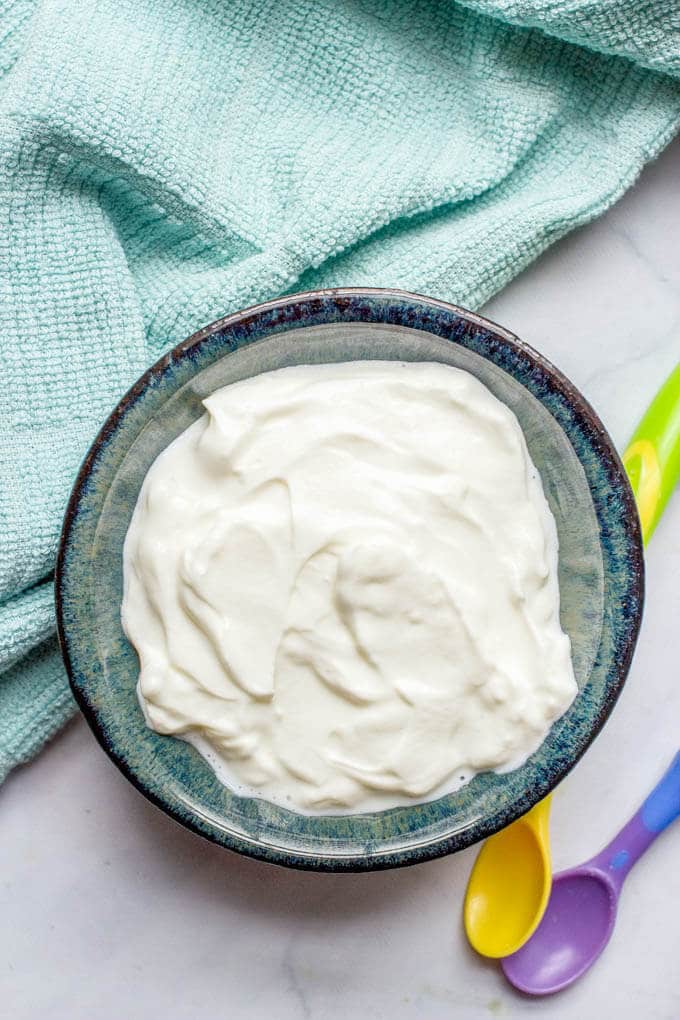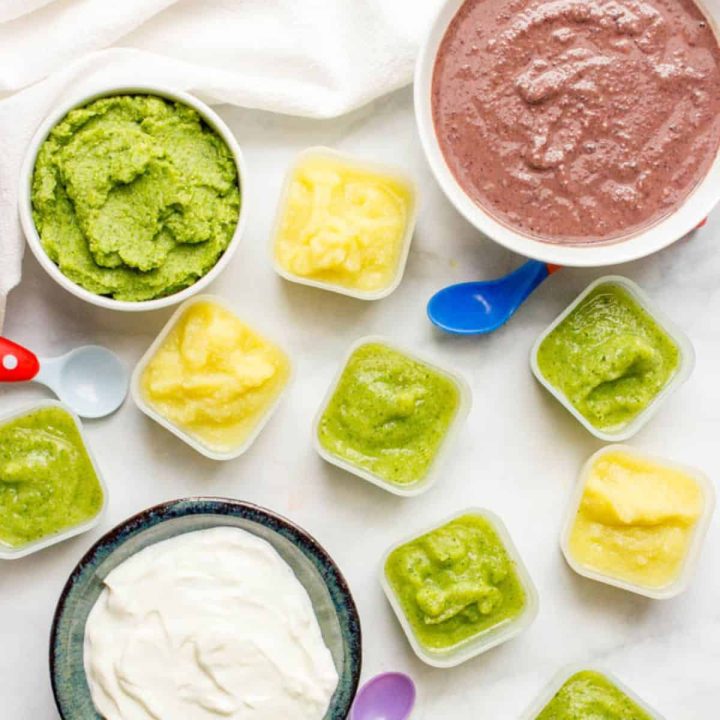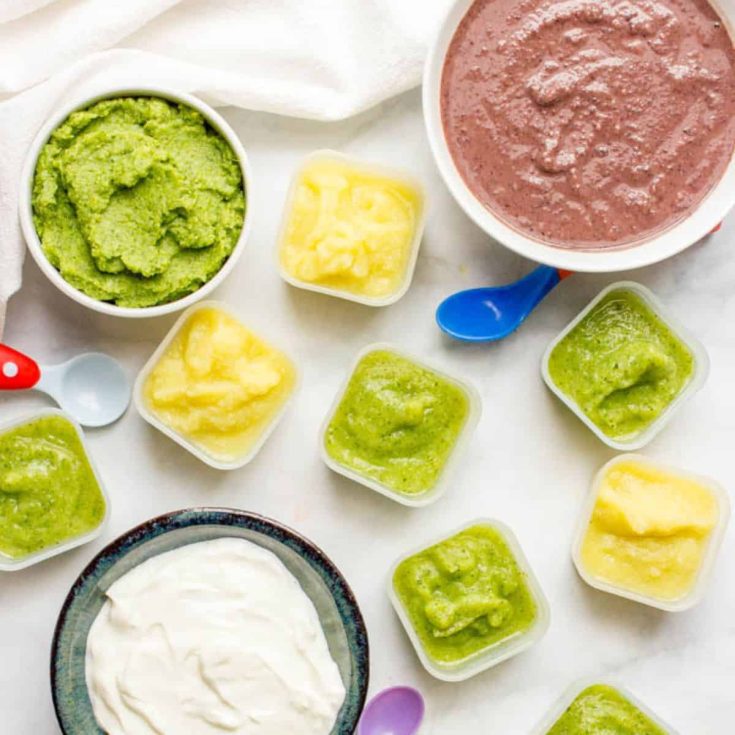(You can watch my daughter and I make these foods on our Facebook Live video here. ) Hello to all my lovely baby mamas! (I know, I know, you may not feel very lovely most days, what with the constant bodily fluids all over you. Hang in there. This too shall pass.) But in the meantime, a hungry baby is no laughing matter so let’s get right to it! Today we are introducing baby to broccoli, zucchini, yellow squash, black beans and yogurt. And we’re back again with another lightening-fast round of baby food making. Five foods, under 20 minutes. Just like my homemade baby food peas, green beans, applesauce, butternut squash and oatmeal and my homemade baby food quinoa, peaches, avocado, pumpkin and cottage cheese - I’m all about making the most of your time! So, you ready?
Homemade Baby Food Instructions:
Step 1: First, get your broccoli going. Steam your broccoli florets using a steamer basket over a pot with a small amount of water. It should take 8-10 minutes to get them nice and tender. Then puree, cool slightly and serve. As you’ll see on my list of favorite baby food combinations, broccoli apparently pairs well with pineapple. Don’t ask me, ask the little mouths that gobble it up. Step 2: Next up is zucchini and yellow squash. I think I introduced these separately, but then quickly always made them together. Once I got past the initial baby food stage, I would sauté some sliced zucchini and yellow squash with a small bit of diced onion in olive oil, sprinkle with thyme, cook until tender and then puree. Delicious! (And when they’re ready, skip the puree and serve these as finger foods.) For the first time around, just dice these up, steam in a steamer basket in a pot with a little bit of water – about 5-7 minutes — and then puree. You can also do them in a large pan with a bit of water, like I did here, so you can steam the broccoli while you cook these at the same time. Let’s maximize our stove usage! Either way, zucchini and squash have a high water content, so the puree may be pretty watery. You can mix this with brown rice or quinoa or couscous or another grain that your baby has had. Step 3: Black beans were such a hit with my kiddos! In fact, with M, if there was a food she didn’t seem to like, I would just add pureed black beans to it and she’d gobble it up. No baby food going to waste around here. You really just open the can, rinse and drain the beans very well and puree them up. You’ll need to add some water to get the puree going. This method works for all the other beans you’ll want to expose your baby to – cannellini beans, pinto beans, great Northern beans, kidney beans, even black-eyed peas. Just rinse well, drain, puree and serve. And once you’re slowly moving into finger foods, save out a half of a cup of the beans before you puree and plop them right onto the high chair tray. Both of my kids still love eating beans and it’s such a good protein and fiber boost. Step 4: I started both of my kids with Greek yogurt. It’s thicker, yes, but it’s also got tons more protein and no added sugar. (Go for the plain stuff. Here’s how to flavor it up with some fruits mixes for yogurt (plus spinach or kale) later on when they’re ready.) As to serving… um, just open the container. It’s that easy. One more note: In the beginning, make sure to get the full-fat Greek yogurt. Cabot makes a 10% fat Greek yogurt. See if you can find that. Otherwise, there should be 6% or at least 2%. You don’t want to go fat-free for babies. They need that fat to nourish their growing brains and bodies. And we’re DONE! You just made tons of great homemade baby food! If you’ve got more than your baby will eat in the next few days, just pack some of it away in the freezer. (I use baby ice cube trays or small containers to portion it out and freeze it, then pop them in a labeled freezer bag.) If you’re wondering, what’s a serving size for a baby? I always went with about 2-4 tablespoons per serving per food, depending on the baby’s age, between about 6 and 12 months. I had hearty eaters and would offer 2-3 foods in those portion sizes at each meal. I hope this was helpful! And be sure to check out my other beginner baby foods and batch cooking ideas. XO, Kathryn P.S. Here’s a helpful run-down of my other rounds of baby food making: Homemade baby food round 1: peas, green beans, applesauce, butternut squash, oatmealHomemade baby food round 2: sweet potato, brown rice, chicken, pears, bananaHomemade baby food round 3: quinoa, peaches, avocado, pumpkin, cottage cheeseHomemade baby food round 5: asparagus, barley, edamame, blueberries, mangoHomemade baby food round 6: apricots, prunes, egg yolks, chick peas, blackberries Note: This post has been updated with new photographs and revised text. It was originally published in May 2015. Consistency: The zucchini and squash purees will be watery. They are great to mix with brown rice, oatmeal, quinoa, couscous or another starchy grain that your baby has had. Beans: The method for black beans would work with most any other canned bean as well. Yogurt: I recommend going as high-fat as you can for your Greek yogurt because babies need that fat. A 5% fat Greek yogurt is easy to find and you may be able to track down as much as a 10% fat. Blender: I have always used and highly recommend a hand-held immersion blender for making homemade baby food. It’s lightweight, easy to use and easy to clean. Storage: Homemade baby food can be stored in the refrigerator for 3-5 days or packed up in the freezer (I use ice cube trays and small containers like these and these) for 3-5 months.
